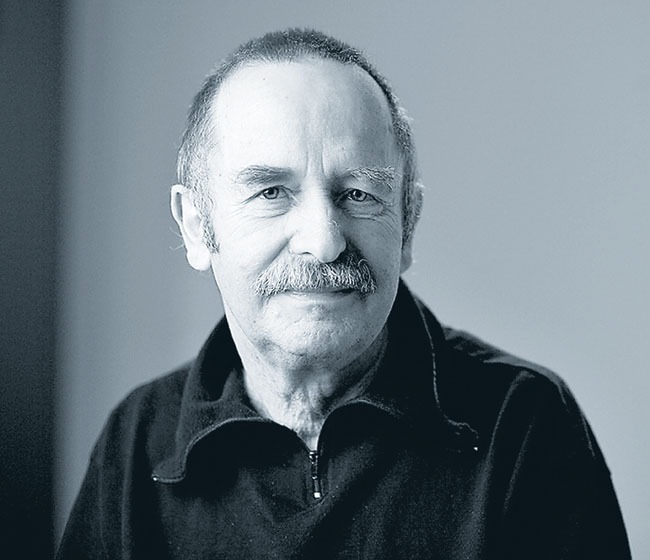Prof Frank Huster and Duravit celebrate the 25th anniversary of the Architec series
When he started working on a bathroom for Duravit in 1993, designer Prof Frank Huster opted for clear lines and the fundamental elements of the circle and square, which resulted in the Architec series. The clearly understandable form of Architec was devised with a focus on semi-public and public areas of applications.
The award-winning Architec range has, since, been developed further and expanded. Today, 25 years on, it comprises 35 elements from washbasins to toilets, including for instance a range of console-type and built-in basins as well as solutions for the medical field, or barrier-free applications in accordance with DIN standards.
In his work, Frank Huster considers day-to-day use, which is apparent from a range of details such as the easy-to-clean ceramic outlet sieve on the washbasin for increased hygiene in medical applications, a pre-punched opening for soap dispensers in the tap platform, or the integrated glazed grip on the Vital washbasin that makes it easier for wheelchair users to pull themselves up to the washbasin with just one hand.
Here are excerpts of Huster’s response to Duravit editors to questions about his design philosophy.
In your opinion, have the requirements for bathroom fittings changed in the last 25 years?
There is certainly a much greater focus on the bathroom today; it has become a centre of personal hygiene and body control. It’s larger and better equipped and can be individually designed thanks to a comprehensive offering of products, surfaces and lighting elements at reasonable costs. Bathrooms are generally more comfortable and can therefore also be used in an age-appropriate manner. I also include shower-toilets in this. Very real developments in our society require us to face up to the central functions of living as we age. These are all thoroughly positive developments. In the context of declining household sizes and increasing property and rental prices in cities, however, we still lack concepts for well-designed, smaller bathrooms that are comfortable to use.
Talking about sustainability, to what extent does durable design contribute to the conservation of resources?
I’ve long been an advocate of less but better stuff. In a society where ecological issues and questions around sustainable development are increasingly gaining traction, Architec is a wonderful example of restrained, durable design. At the same time, material properties and quality are important factors. The basic mass from which the ceramic is made consists of natural raw materials, the hygienic, smooth surface is resistant to wear and abrasion as well as easy to care for, which makes it ideal for the high demands in public and semi-public areas.
To what does the Architec range owe its longevity?
 First of all, it’s Architec’s functionality, which works really well down to the very last detail. The restrained style also plays a central role for a consumer good that will be in use for a long time. Added to this is the pleasant feel and quality of the white ceramic itself. And last but not least, acceptance by planners and consumers also determines how long the product’s lifespan will be.
First of all, it’s Architec’s functionality, which works really well down to the very last detail. The restrained style also plays a central role for a consumer good that will be in use for a long time. Added to this is the pleasant feel and quality of the white ceramic itself. And last but not least, acceptance by planners and consumers also determines how long the product’s lifespan will be.
What was your inspiration when you started designing the Architec series?
At that time there were no compact washbasins around where you could comfortably wash your hands. I was also unhappy about the desolate state of public and semi-public sanitary facilities. We then worked with Duravit to develop the Architec family and decided that as well as being used in public areas, the products should also be suitable for the private bathroom.


